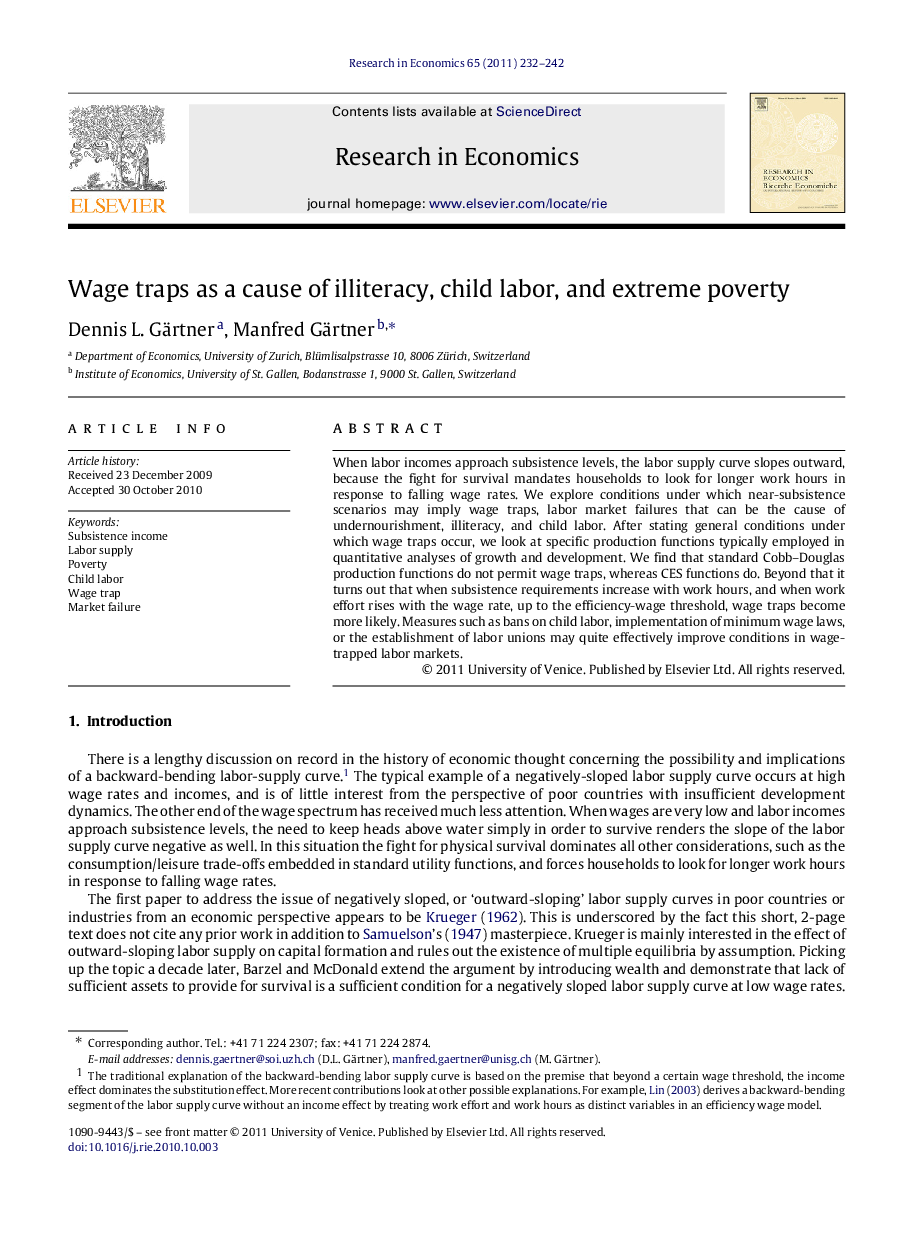| کد مقاله | کد نشریه | سال انتشار | مقاله انگلیسی | نسخه تمام متن |
|---|---|---|---|---|
| 984478 | 934286 | 2011 | 11 صفحه PDF | دانلود رایگان |

When labor incomes approach subsistence levels, the labor supply curve slopes outward, because the fight for survival mandates households to look for longer work hours in response to falling wage rates. We explore conditions under which near-subsistence scenarios may imply wage traps, labor market failures that can be the cause of undernourishment, illiteracy, and child labor. After stating general conditions under which wage traps occur, we look at specific production functions typically employed in quantitative analyses of growth and development. We find that standard Cobb–Douglas production functions do not permit wage traps, whereas CES functions do. Beyond that it turns out that when subsistence requirements increase with work hours, and when work effort rises with the wage rate, up to the efficiency-wage threshold, wage traps become more likely. Measures such as bans on child labor, implementation of minimum wage laws, or the establishment of labor unions may quite effectively improve conditions in wage-trapped labor markets.
Research highlights
► This paper explores conditions under which near-subsistence labor incomes imply wage traps.
► Wage traps are labor market failures that can cause undernourishment, illiteracy, and child labor.
► Orthodox Cobb–Douglas production functions do not permit wage traps.
► Cobb–Douglas functions featuring work effort that rises with the wage rate do permit wage traps, and so may CES functions.
► Bans on child labor, minimum wage laws, or labor unions may quite effectively improve conditions in wage trapped labor markets.
Journal: Research in Economics - Volume 65, Issue 3, September 2011, Pages 232–242